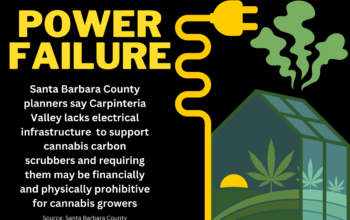California has banned coal and nuclear as a source of power. We are demolishing four dams that provide us with hydro-electric power. All of this with no stable, clear, reliable sources of energy as replacements.
Newsom and the Democrats are banning gas powered cars—though you will be very limited to charge your EV with very expensive electricity. Now they want to freeze us out of our homes—in hopes we leave California. In 15 years, California will no longer be livable for the poor or middle class—it will have an economic collapse—a suicide, not a murder/
“California regulators are poised to outlaw the sale of natural gas-powered furnaces and gas-powered water heaters in the state by 2030.
The move would make the state the first in the country to back away from these fossil-fueled household appliances.
The California Air Resources Board (CARB) is expected to take the step as part of a far-reaching plan to shrink the state’s carbon footprint and reduce nitrogen-oxide pollution. That greenhouse gas is a key ingredient in the creation of smog.
Note, once again, no replacement.
California could ban gas furnaces and gas water heaters

By Erik Anderson, KPBS, KPBS, 9/21/22
California regulators are poised to outlaw the sale of natural gas-powered furnaces and gas-powered water heaters in the state by 2030.
The move would make the state the first in the country to back away from these fossil-fueled household appliances.
The California Air Resources Board (CARB) is expected to take the step as part of a far-reaching plan to shrink the state’s carbon footprint and reduce nitrogen-oxide pollution. That greenhouse gas is a key ingredient in the creation of smog.
The panel is widely expected to approve the 2022 State Strategy for the State Implementation Plan which updates California’s strategy to meet air quality guidelines set by the Environmental Protection Agency.
“This is the binding commitment to doing this,” said Leah Louis-Prescott of RMI, a California-based think tank. “To phasing out fossil fuel appliances and committing the state of California to clean and healthy, all electric homes and businesses.”
The EPA has strengthened the eight-hour ozone standard to 70 parts per billion, a threshold 19 areas in California failed to hit in 2018.
San Diego has consistently ranked in the top ten of the nation’s cities with air quality issues linked to ozone.
CARB has already moved to wipe out emissions from cars, by banning the sale of new internal combustion engines by 2035. Buildings are next because natural gas-powered appliances are significant sources of indoor pollution.
“Homes and buildings in California generate four times more nitrogen oxide pollution than California’s gas power plants combined,” said Laura Feinstein of the Bay Area think tank SPUR.
“We’re moving forward together to address the holistic transition to cleaner buildings,” Leah Louis-Prescott said.
Feinstein added that eliminating gas-powered furnaces and water heaters is another step in the move away from the use of fossil fuels in buildings.
“When regulators vote to phase out gas appliances, what that means is that after a certain date people won’t find the gas-powered versions of those appliances in the stores when their old ones break,” Feinstein said. “So, it’s not like in 2030, you’re going to have to pull out your furnace and put in a new heat pump. It’s that the next time your furnace breaks and you have to buy a new one anyway you’ll be switching to a new zero emission version.”
Related: San Diego is still a long way from composting residential food scraps
LISTEN • 4:27
State residents will be able tap into federal financial assistance included in the Inflation Reduction Act as they transition to emission-free technology.
The legislation includes rebate money for the installation of water heaters and furnaces that use heat pumps. Heat pump appliances are more efficient but also more expensive than natural gas or electric appliances.
The deadline is still eight years away, and residents can make the change now, but they need to be informed.
“We have a lot of time to continue to educate consumers and engage different stakeholders to make sure that we’re moving forward together to address the holistic transition to cleaner buildings,” Louis-Prescott said.
California nitrogen-oxide emissions are down nearly 75% since 2000. They could be cut in half again by 2035 if the state stays on track with its emission reduction goals.



